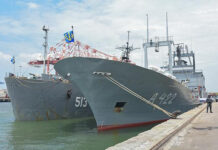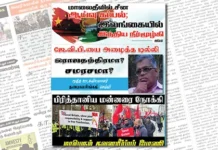Discussions around Sri Lanka’s energy crisis may have died down since reports of a major financial crisis in the Asian country circulated last summer, but Sri Lanka is still a long way from economic recovery. As it awaits an International Monetary Fund (IMF) bailout to support its rebound, it continues to face major fuel shortages and lower industrial activity, as it focuses on fostering new energy partnerships and attracting new investments.
In the last quarter of 2022, Sri Lanka was driven even further into recession, as borrowing costs reached a two-decade high, with funds being used to manage inflation. The country’s GDP dropped by 12.4 percent between September and December, compared to the same period in 2021. Sri Lanka’s economy has now contracted for four quarters in a row, marking the worst financial crisis for the state in seven decades.
But help may be on the way, as Sri Lanka hopes the IMF will unlock a $2.9-billion bailout that was approved in September at their meeting next week, which could attract greater investment to help the country begin to get back on track. Sri Lanka has been making changes to support its application for funding including increasing taxes and cutting energy subsidies, it also introduced a more flexible exchange rate and increased its benchmark interest rate to address inflation. In recent months, consumer costs have been sent sky high, as the country faced supply shortages and has few funds for its imports. However, as IMF funds start to arrive, the country’s economy is expected to begin on the long road to recovery.
A major knock-on effect of the economic crisis has been seen in severe energy shortages.
Last year, Sri Lanka ran out of fuel, causing schools to close and resulting in widescale protests. The lack of fuel was blamed primarily on poor economic management and the Covid-19 pandemic. It was further exacerbated by the unwillingness of suppliers to provide new shipments of fuel following years of unkept promises and overdue payments – totalling around $700 million last July.
Following the start of the energy crisis, the government introduced a “National Fuel Pass” as a means of rationing fuel, which provided people with a weekly quota based on the number plates of registered vehicles. It also implemented a 12-22 percent rise in fuel prices, which drove up inflation. Citizens and potential foreign investors called for new fiscal reforms to address the economic and energy crises and establish a roadmap for recovery.
The crisis largely stems from Sri Lanka’s reliance on foreign energy products for the country’s industrial development. The lack of available fuel has brought much of Sri Lanka’s manufacturing operations to a halt and meant that households and businesses have been left facing severe financial difficulties.
In February this year, Sri Lanka increased electricity prices by 66 percent to encourage the IMF to approve funding. Inflation has already reached 54.2 percent and there are worries that this increased cost will drive inflation up further. However, the government is still finding it difficult to afford vital fuel imports because of its low foreign currency reserves. Therefore, it is justifying the increase as a means of convincing the IMF to bail it out, leading to the introduction of effective fiscal policies and longer-term economic improvements. The country’s Energy Minister, Kanchana Wijesekera, stated “We know that this will be hard on the public, especially the poor, but Sri Lanka is caught in a financial crisis and we have no choice but to move towards cost-reflective pricing.” Wijesekera added, “We hope that with this step Sri Lanka has moved closer to getting the IMF programme.”
But the turmoil has not stopped foreign interest in the country’s energy sector. In February, India said that it would be signing a pact to link the two countries’ power grids and begin negotiations on an amended trade agreement within two months. India has already given Sri Lanka $4 billion in assistance, but Sri Lanka is hoping to enhance its trade relations and investment perspectives, as it edges closer to receiving IMF funding.
The Sri Lankan High Commissioner Designate to India, Milinda Moragoda, explained: “We have to have growth, otherwise basically the economy will shrink.” Moragoda added “As far as growth is concerned, India offers that prospect. So we will have to move on that. Tourism from India, investment from India, integration with India. That’s what we have to do.” Part of this plan includes the development of the country’s renewable energy resources in the north for power to be exported to southern India through a cross-border transmission cable.
Meanwhile, China’s Sinopec announced this month that it plans to finance the construction of a refinery in the Hambantota district in Sri Lanka. Representatives from the energy firm offered Sri Lankan President Ranil Wickremesinghe a proposal outlining their “readiness to invest in the import, storage, distribution, and marketing of fuel to cater to Sri Lanka’s energy requirements.” The refinery could provide a minimum capacity of 100,000 bpd for export. This would add to Sri Lanka’s low export capacity from its ageing 50,000 bpd Kelaniya refinery. Investments in the country’s energy sector could help Sri Lanka solidify its long-term energy security, even if it faces shortages in the short term.
Sri Lanka remains in a state of limbo as it waits for the IMF to release much-needed funds to introduce new fiscal policies and begin on the road to economic recovery. Meanwhile, the government is focusing on fostering relations with other countries in the region to help attract investments and boost its long-term energy security. Only time will tell if the island state can pull itself out of both its economic and energy crises.
Oilprice.com





